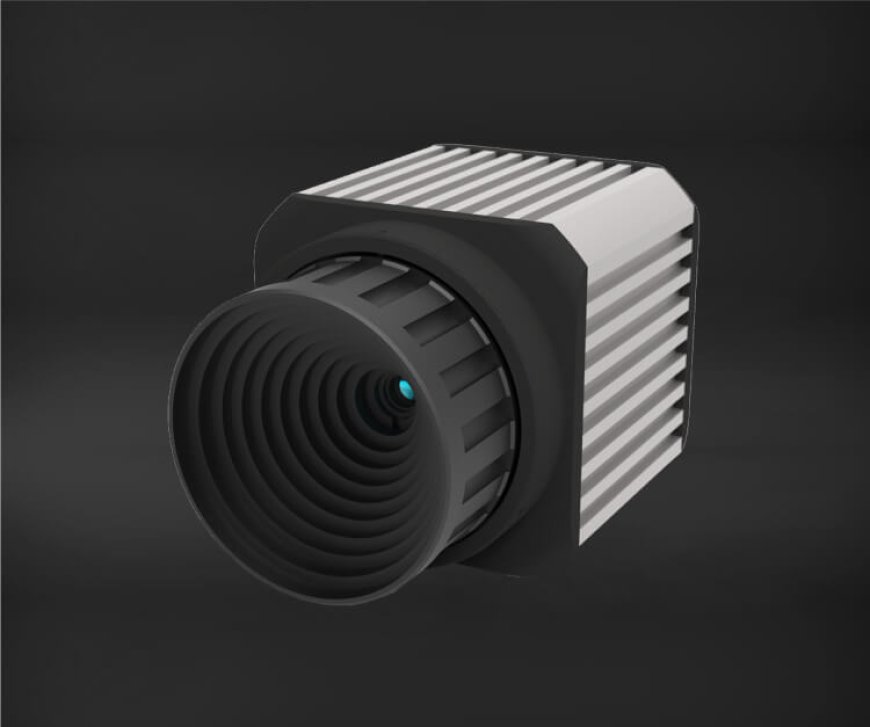EVERYTHING YOU NEED TO KNOW ABOUT THERMAL IMAGER CAMERA
Unlock the power of thermal imaging with our guide! Learn about the technology, applications, and tips for choosing the right thermal imager camera. Explore the thermal spectrum, understand heat patterns, and make informed decisions for professional or personal use. Join the thermal imaging revolution with our concise insights!
Within the realm of technology, thermal imagers stand as pivotal devices, enabling the capture and interpretation of infrared energy emitted or reflected by various materials. These ingenious tools can transform detected thermal energy into comprehensible thermograms, offering invaluable insights into the thermal properties of the observed subjects.
Categorically, thermal imager cameras come in different forms tailored to distinct applications. Among these variations, two primary classifications emerge online thermal imaging cameras and portable infrared cameras. These sophisticated instruments serve diverse purposes and exhibit unique functionalities tailored to specific scenarios.

Our exploration delves into the nuanced information of thermal imaging cameras.
What are the working principles of thermal imager cameras?
IR Detection Process: Thermal imaging cameras operate by detecting and quantifying the infrared radiation emitted by objects, essentially capturing their heat signatures.
Lens and Sensor Setup: Fitted with a specialized lens capable of transmitting IR frequencies, the camera focuses these frequencies onto a sensor grid designed to detect and interpret them.
Sensor Array Conversion: The sensor array comprises pixels that react to incoming infrared wavelengths, converting them into electronic signals.
Processing and Visualization: These signals are then processed by an internal camera processor, using algorithms to generate a color-coded map representing different temperature values. This map is displayed on the camera's screen for visualization.
Dual Mode Functionality: Many thermal imaging cameras offer a standard shooting mode using visible light. This feature lets users capture IR and standard images, facilitating quick comparison and identification of specific problem areas.
What are the uses of thermal imager cameras?
Drone Deployment of Thermal Cameras
Thermal imaging in drones elevates observational capabilities, aiding hobbyists, emergency responders, search teams, and military strategies.
Fire Detection via Thermal Imaging
Thermal imaging assists firefighters in low-visibility conditions, pinpointing survivors and identifying potential ignition sources or lingering fires.
Wildlife Monitoring with Thermal Imaging
Thermal imaging aids wildlife photography, animal tracking, and environmental monitoring, allowing unmanned setups to monitor nocturnal species.
Marine Applications of Thermal Imaging
Thermal imaging aids collision detection on marine vessels during nighttime, foggy, or severe weather conditions.
Security Surveillance with Thermal Cameras
Thermal security cameras offer superior performance in low light and dense foliage, reducing false alarms and providing cost-effective surveillance solutions.
Thermal Imaging Versus Night Vision
Thermal imaging reveals obscured targets by fog, smoke, or camouflage compared to night vision technology's reliance on ambient light.
Industrial Use of Infrared Cameras
Industrial-grade thermal cameras hold specific certifications for hazardous environments, catering to various industrial applications.
What are the differences between online thermal imaging cameras and portable infrared cameras?
Online Thermal Imaging Cameras:
· Application: Mainly fixed in position for continuous monitoring or surveillance.
· Usage: Employed for prolonged observations in specific locations or systems.
· Connectivity: Often linked to a network or system for real-time data streaming.
· Features: May offer higher resolution and specialized functions for extended usage.
Portable Infrared Cameras:
· Mobility: Designed for handheld use, offering mobility and flexibility.
· Flexibility: Suited for on-the-go, quick inspections and immediate assessments.
· Portability: Easily carried to various locations for versatile applications.
· Ease of Use: Typically user-friendly, allowing quick setup and instant usage.
How do you select the best thermal imager camera supplier in the industry?
Selecting the best thermal imager camera supplier involves considering several key factors:
Quality Assurance and Reputation:
· Industry Standards Compliance: Ensure the supplier adheres to industry standards, reflecting their commitment to quality.
· Reputation and Experience: Look for established suppliers with a proven track record and positive customer feedback, indicating reliability and expertise.
Diverse Product Range and Innovation:
· Range of Offerings: Opt for suppliers offering a wide variety of thermal imaging cameras catering to various needs.
· Innovation and Technology: Choose suppliers that adopt modern technology, offering advanced and efficient products.
Support and Services:
· Customer Support: Evaluate the supplier's customer service for prompt responses and technical assistance.
· After-Sales Services: Consider suppliers providing comprehensive after-sales support and warranty options.
Value for Investment and Cost-Efficiency:
· Quality vs. Cost: Strike a balance between product quality, features, and cost-effectiveness to ensure value for investment.
· Long-Term Costs: Assess the total cost of ownership, including maintenance and support.
Certifications and Compliance:
· Environmental and Safety Standards: Confirm the supplier meets relevant quality, safety, and environmental certifications.
· Compliance with Regulations: Ensure the supplier complies with legal and regulatory requirements.
Supply Chain and Reliability:
· Efficient Supply Chain: Evaluate the supplier's supply chain efficiency and reliability for timely deliveries.
· Consistency and Dependability: Consider their consistency in delivering quality products and services.
Partnerships and Collaborations:
· Partnerships with Industry Leaders: Look for suppliers collaborating with renowned brands or industry leaders, indicating reliability and trustworthiness.
Customer Feedback and Reviews:
· Feedback and Testimonials: Consider reviews and testimonials from other customers to gauge overall satisfaction and reliability.
Summary - Thermal imager cameras are powerful tools, harnessing infrared technology to detect heat signatures. These devices find applications across industries, from surveillance and firefighting to wildlife monitoring and industrial inspections. Tempsens Instruments (I) Pvt. Ltd. stands out as a reputable supplier, offering top-notch thermal imaging solutions with a commitment to innovation and quality, making them a trusted name in the industry.












